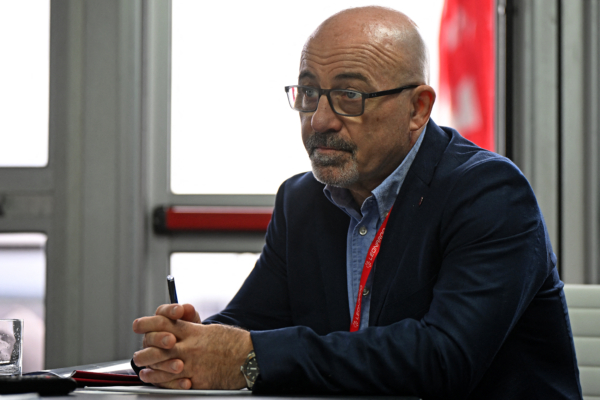Italian defense giant Leonardo officially unveiled the “Michelangelo Dome” defense system driven by artificial intelligence (AI) on Thursday (November 28) to counter threats posed by hypersonic missiles, large-scale drone attacks, and hybrid network warfare. The open architecture allows even small countries to access it, with deployment expected to commence in Italy in 2026.
According to a report by the UK aviation industry media aerospaceglobalnews on Thursday, Italian Defense Minister and top military officials attended a technical briefing held in Rome on Thursday. Leonardo’s CEO and General Manager Roberto Cingolani provided a candid assessment of the security challenges facing Europe and put forward an ambitious response plan.
Cingolani emphasized the importance of real-time response capabilities. He warned that if an object is flying at a speed of two to three kilometers per second and its striking position cannot be predicted several minutes in advance, the targeted defense will be quickly hit.
“These threats could arrive within seconds. We don’t have enough time to send emails or exchange messages. We must react in real-time,” he said.
Cingolani particularly emphasized that Europe lacks an ocean barrier, and in the future, hypersonic or maneuvering weapons launched from hostile countries could reach various capital cities in five to seven minutes. The AI-driven unified defense network introduced by Leonardo is currently the best response system.
Cingolani elaborated on the shift from traditional linear “kill chain” to distributed “kill web” defense theory. In the new air defense system, sensors from any region can detect threats, with AI as the command core integrating and evaluating data in real-time, automatically selecting the best attack means. Operators retain final decision-making authority but allow artificial intelligence to execute at machine speed.
“Through the kill web, we will simultaneously have all sensors and the best shooters. It’s like an orchestra composed of people playing different instruments. Only by creating a synergistic effect, can it be effective on the battlefield,” he said.
Satellites are another core of the project. The new “Project Bromo” in Rome at the Leonardo–Thales–Airbus facility will manufacture 100 satellites annually to form a satellite detection network aimed at missile warnings, infrared plume detection, and trajectory prediction.
“These satellites must be able to see objects flying at a speed of five kilometers per second. Those who possess these satellites will have detection and prediction capabilities that others do not,” Cingolani said.
Crucially, the design of the Michelangelo Dome allows even small European countries without fifth-generation fighter jets or top-of-the-line anti-aircraft missile systems to access the defense system.
“Even if a country doesn’t have the money to buy F-35s or Patriot missiles, if they have a missile somewhere, we can still integrate it into the Michelangelo Dome,” he said.
Leonardo positions itself as the only European company with a complete technical stack to deliver the system: sensors, effectors, space assets, network capabilities, AI development, and high-performance computing.
“We have over 2,000 engineers skilled in using AI systems and over 200 AI developers,” Cingolani said. The “DaVinci” supercomputing platform at Leonardo will double its capacity in the coming months.
Cingolani previewed this project as early as July this year. At a financial results briefing earlier this month, he described the Michelangelo Dome as “the largest integrated project in the history of the defense industry,” emphasizing the system’s ability to rapidly respond to potential aerial attacks.
This project is a significant outcome of Leonardo’s strategic layout over the past three years, demonstrating the company’s comprehensive development in space technology, drones, AI, and network security.
Insiders familiar with the project’s progress indicate that this multi-domain interconnected AI-driven system is currently in an advanced development stage, with the company conducting real combat tests against neutralizing air attacks. According to the plan, the system will achieve full operation by the end of this decade.
Cingolani mentioned that Leonardo will deploy the first “death zone” defense layer in Italy in 2026, integrating existing systems into the new AI-driven architecture.
Cingolani emphasized that the deployment in Italy first is to enhance implementation speed and not to establish an aerial shield solely for defending Italy.

